Ancient ksours
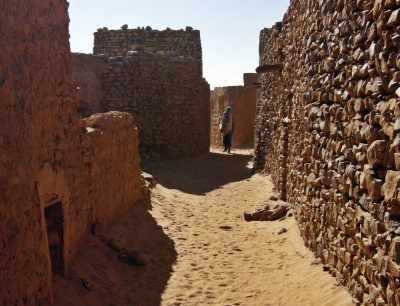
The Ancient Ksour of Ouadane, Chinguetti, Tichitt and Oualata are trading and religious centres that developed along the ancient Sahara caravan trade routes.
These four towns, located at the southern limits of the desert, started to blossom in the 12th century. Their medieval town centers are characterized by narrow streets, houses built around central courtyards and decorative stone architecture. Chinguetti, centered around its old Friday Mosque, became a principal gathering place for pilgrims of the Maghrib to gather on the way to Mecca.
Community Perspective: Solivagant visited Chinguetti and Oudane, and he found them “much smaller than Timbuctoo and I perhaps felt the “call of the desert” and closeness to the days of camel trains supporting Saharan trade, pilgrimages to Mecca and Islamic scholarship, more than I did in Mali”.
Archaeological Site of Aigai
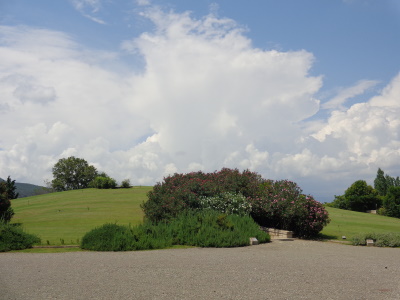
The Archaeological Site of Aigai (modern name Vergina) holds the remains of Macedonia's first capital, Aegae.
It was the seat of the royal family of Philip II and Alexander the Great. Aegae flourished chiefly in the second half of the 4th century BCE. From this period, the palace, theatre and the necropolis remain. The royal tombs, with burials spanning a longer period, were decorated with wall paintings and held rich grave goods.
Community Perspective: The focus of the site is the great museum that is cut into Philip´s tumulus. The palace area has been closed for restoration for ages and stays unreviewed. Hubert has provided the most up-to-date info (September 2023).
Bauhaus Sites
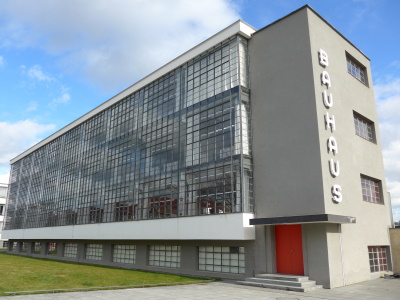
Bauhaus and its Sites in Weimar, Dessau and Bernau represent the most prominent examples of the Bauhaus architectural school, which was the birthplace of Classical Modernism.
The "Staatliche Bauhaus" was responsible for the radical renewal of architecture and design. These seven (groups of) buildings represent both their initial phase in Weimar under Walter Gropius, and the second (and more successful) phase out of Dessau (with Hannes Meyer and Ludwig Mies van der Rohe). The Bauhaus building, made out of concrete, glass and steel, is a landmark in 20th-century architecture.
Community Perspective: This has received glowing reviews from the modern architecture-loving part of the WH community (Ian even wrote 3 reviews!). Taking a guided tour of the Bauhaus building is a good start to understanding their ideas.
Belize Barrier Reef
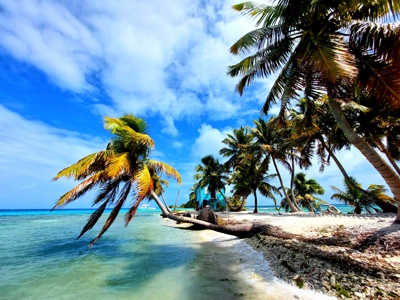
The Belize Barrier-Reef Reserve System is a marine and coastal landscape containing a series of coral reefs.
It extends for about 300 km, making it the second-largest coral reef system in the world after the Great Barrier Reef in Australia. A wide array of reef types contained in a relatively small area can be found here. The submarine seascape is diverse, and there are unique geological features such as the Blue Hole and Rocky Point where the barrier reef touches the shore. It is also rich in fauna, ranging from jaguars to great hammerhead sharks.
Community Perspective: It’s a scuba diver heaven, with the Blue Hole as the holy grail (though only experienced divers are allowed to do the most spectacular 40m dive, it is less spectacular at less depth). Half Moon Caye comes recommended even more as it is rich in marine fauna. If you don’t dive or snorkel, your options are to take a sightseeing flight across the reef and the Blue Hole, to visit Bacalar Chico NP which is a land component (covered on a bike by Jarek), or stay on Tobacco Caye. There are also options from Placencia.
Canal du Midi
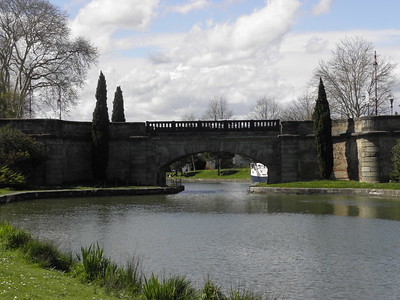
The Canal du Midi, built for a strategic political objective, is a 240 km long canal that was a great engineering achievement.
The Canal is one of the technologically most significant canals in the world: it uses lock staircases, reservoirs, aqueducts, dams, bridges, and tunnels to connect the Garonne River at Toulouse to the Étang de Thau on the Mediterranean. The original purpose of the Canal du Midi was to provide a shortcut between the Atlantic and the Mediterranean, avoiding the long sea voyage around hostile Spain, Barbary pirates, and a trip that in the 17th century required a full month of sailing.
Community Perspective: Navigating the Canal by boat seems to evoke the most positive reviews. For the casual visitor, Toulouse provides easy access. Hubert followed the course of the Canal by car and provided tips for short stops to take in the scenery.
Castel del Monte
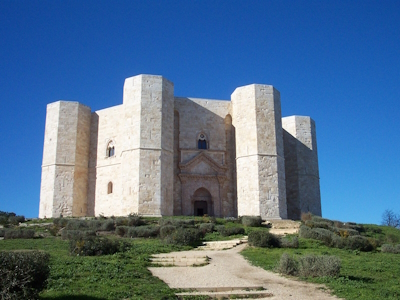
Castel del Monte is a unique masterpiece of medieval military architecture, with a perfect form.
Its design is a harmonious blend of cultural elements from Classical antiquity, Muslim architecture and the Cistercian Gothic of northern Europe. The sponsor of its construction was Holy Roman Emperor Frederick II von Hohenstaufen, an absolute monarch and Crusader, but also a great lover of culture, mathematics, astronomy and natural sciences.
Community Perspective: Its perfect octagonal plan is unique and the building is well-preserved as it never saw any fighting. The inside is completely empty, as the contents were looted after the Middle Ages. Tsunami tried to visit on public transport, failed miserably but it all ended well.
Cologne Cathedral
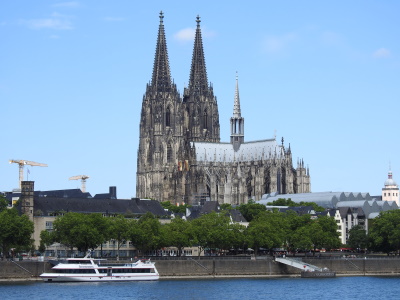
The Cologne Cathedral is the highest expression of the Gothic Cathedral architectonic form that developed over the 12th and 13th centuries in Europe.
Started in 1248, it took over six centuries to complete – which shows the continuity and persistence of the Christian belief in this region. The work was finished in the same uniform Gothic style. The interior still holds many of its original, mostly 14th-century components and works of art.
Community Perspective: It stands out for its huge, enormous, monstrous size – the best views are from the opposite side of the Rhine. And it’s “Gothic to the very core and everything points upwards”. The interior is less remarkable and lacks a religious feel due to the many tourists that visit it (on a guided tour you may be able to forget that).
Cuenca
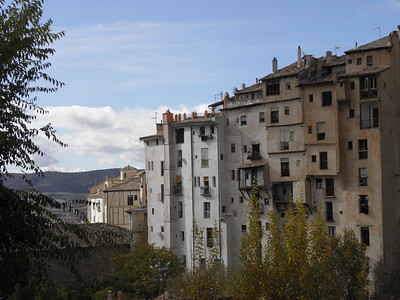
The Historic Walled Town of Cuenca is a medieval fortified city built on a limestone ridge.
Cuenca has Moorish origins and was conquered by the Christians in the 12th century. It was subsequently transformed into an Episcopal See and Royal Town, with associated religious and public buildings. Its natural setting has led to unusual vernacular architecture such as houses on cliffs overlooking the river.
Community Perspective: Its OUV actually translates to ‘location, location, location!’ – you’ll have to take a look at those “hanging houses”. In town, the Cathedral and the Museum of Spanish Abstract Art are recommended.
Dutch Water Defence Lines
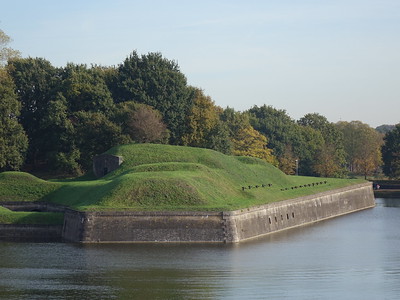
The Dutch Water Defence Lines were a system of military fortifications based on the control of water.
The fortifications consisted of a network of forts combined with temporary flooding of polders via a system of canals and locks that originally were built for civil use. The two major defence lines were the New Dutch Waterline and the Defence Line of Amsterdam, built in the 19th century and early 20th century to protect the economic center of the country and the capital.
Community Perspective: “As a casual tourist I wouldn’t suggest the sites themselves are really worth trekking out to see..” is Ian’s verdict. Many of the forts now have a different use (restaurant, art centre) and are in various states of repair. Even based on 13 reviews, spanning dozens of locations, it is hard to recommend a specific component for a satisfying visit. Just pick 1 or 2 near Amsterdam or Utrecht.
Gammelstad
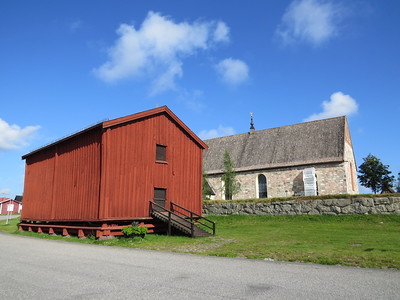
The Church Town of Gammelstad, Lulea, is the best-preserved example of a type of town that was once widespread throughout northern Scandinavia.
The cottages served as overnight stop for parishioners who lived too far away to make the journey to the church and back in one day during the weekend. At the centre of the organically grown town lies the early 15th-century stone Nederlulea church, surrounded by more than 400 wooden houses. These are still privately owned, keeping the custom of a church town alive.
Community Perspective: A pretty place to visit. The cottage at 253 Framlanningsvagen is open to visitors.
Genbaku Dome
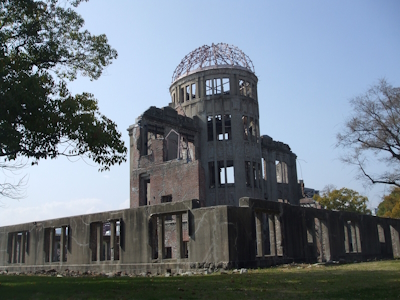
The Hiroshima Peace Memorial (Genbaku Dome) is a symbol of world peace after the destruction created by the first atomic bomb.
The building, a former industrial promotion site, was the only one left standing near the centre of the explosion on 6 August 1945 and it has been preserved as a ruin. It symbolizes the hope for the ultimate elimination of all nuclear weapons. The surrounding Peace Memorial Park (in the buffer zone) holds various smaller monuments, to honor special groups of victims and there is also a museum.
Community Perspective: a moving site to visit, although the interpretation could be more balanced. Hiroshima overall nowadays is perhaps Japan’s most friendly and pleasant city.
Haghpat and Sanahin
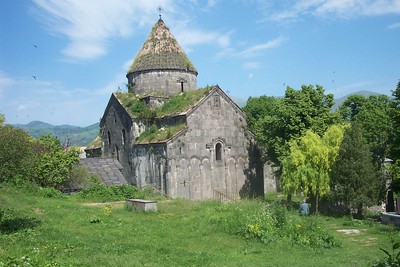
The Monasteries of Haghpat and Sanahin represent a fusion of Byzantine ecclesiastical architecture and vernacular architecture of the Caucasus.
These monasteries dating to the 10th-13th centuries are located in the Debed Canyon in harmony with their picturesque landscape. Both compounds contain several historic churches. Sanahin also has over 50 ancient khachkars (sculptured cross-stones) standing on its territory.
Community Perspective: These are located not far from each other in a fine setting, if you think away the industrial town of Alaverdi. The khachkars are of particular interest. See Nan’s review for tips on getting there without a car.
Itsukushima Shrine

The Itsukushima Shinto Shrine is a traditional Shinto religious centre set as an artistic creation in its natural environment.
Itsukushima Island is known as a holy place for Shintoism and it includes two shrine complexes. With the sea in the foreground and the mountains in the background, they have become recognized as a Japanese standard of beauty. They follow the tradition of Japanese Shinto architecture centered on the worship of nature.
Community Perspective: An easy day trip from Hiroshima. Visit when the tide is high so the O-Torii Gate appears to float above the sea. Look at Frederik’s review for a bit of additional history and GabLabCebu’s for a take on Momijidani Park and Senjokaku Pavillion.
La Lonja de la Seda
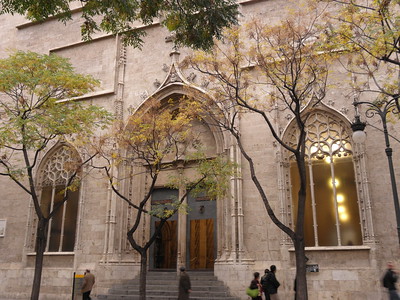
La Lonja de la Seda de Valencia is a 15th-century Gothic masterpiece that was used as a trade hall and silk exchange.
This commercial building became a symbol for the Golden Age of Valencia when it was one of the great Mediterranean mercantile cities. It still is used for commercial purposes. The complex includes the main Contract Hall, the Pavillion of the Consulate which was the seat of the Tribunal del Mar and the central crenellated tower.
Community Perspective: This smallish site is closed on Mondays and there is a small entrance fee. The spiral pillars of the main trading hall are seen as its Gothic highlight. Valencia overall is a good destination for a city break, especially for its modernist City of Arts and Sciences.
Lake Baikal
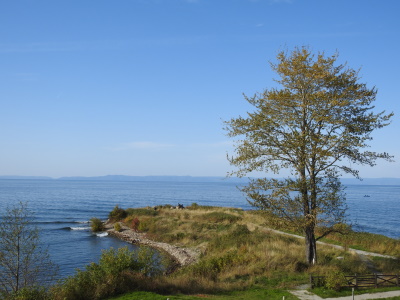
Lake Baikal is a freshwater ecosystem comprising the deepest and oldest lake in the world, surrounded by highly valued protected areas.
The lake contains over one-fifth of the world's liquid fresh surface water. Notable fauna in the lake includes the endemic Baikal seal and fish species like the omul and the Baikal oil fish. The lake is completely surrounded by mountains, located in 5 national parks where the Siberian taiga meets the Mongolian steppes.
Community Perspective: This site is huge and there are many ways to get a good visit: Jarek used the Cirkum-Baikal railway, Jay did an excursion from the Transsiberian railway, Martina travelled on the frozen lake in the winter, as did Solivagant, and Els visited Bajkalski Biosphere Reserve (one of the surrounding parks).
Laponian Area
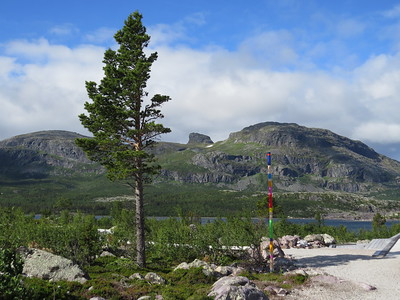
The Laponian Area is a vast Arctic landscape that is inhabited during the summer by some 200-250 indigenous Saami people.
They fish in the area and practice reindeer husbandry. The Saami arrived here some 4000-5000 years ago and turned to herd domesticated reindeer in the 17th or 18th century. The 9400 square kilometres of wilderness is part mountains, part taiga lowlands. Natural features include mires, wetlands, glaciers, moraines, canyons, ravines, and boulder fields.
Community Perspective: The 9 components cover a vast area and it takes multiple days to do this site justice (use Gallivare as a base). Muddus National Park is a good option for short hikes, and Stora Sjofallets NP for the views. The Ajtte Museum in Jokkmokk is recommended for an insight into Saami culture. Nan describes his experience with the 35km of the Rallarstigen hike.
Lednice-Valtice Cultural Landscape
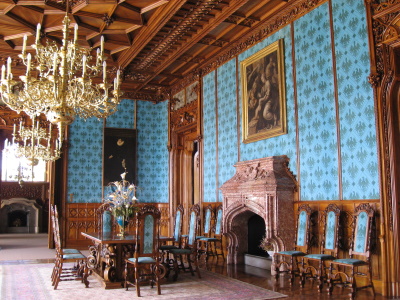
Lednice-Valtice Cultural Landscape is an artificial landscape that evolved during the Enlightenment and the Romantic period under the guidance of the House of Liechtenstein.
This ducal family acquired and merged three estates, and transformed them using Baroque, Classical and Neo-Gothic architectural styles. Central to the property are two country houses, Lednice and Valtice. The surrounding area is covered with pines and ponds and holds numerous bigger or smaller pavilions, often serving as hunting lodges. A framework of avenues and paths providing vistas and rides also was developed.
Community Perspective: most enjoy the landscape that was created, with Frederik praising the Lednice gardens and Hubert happily exploring the area by bicycle. The Czech national wine institute at Valtice comes recommended too. Here you can also enjoy the classical European palace interior tour (Ian was exceptionally happy to find a locked door to the ticket hall). Els hated the place, but Matejicek points out its meaning for the Czechs: “In times before 1989, this place was one of the few, where one could feel an aristocratic flair of former Habsburg Empire.”
Lushan National Park

Lushan National Park is an outstanding example of Chinese landscape culture, where temples and educational buildings have been added to the scenic landscape.
The area has attracted the cultural elite for over 1,700 years. Buddhist and Taoist temples and the Confucian White Deer Cave Academy were built. From the late 19th century it became a summer resort for both Chinese and foreign visitors, which is reflected in the diverse architecture of the villas.
Community Perspective: This is an eclectic site. Els noticed the Communist Party links (and Mao’s bathroom), Stanislaw saw the park from above and a lot of inscriptions, and Dwight explored the more remote parts including 11th century Guanyin Bridge, Lushan waterfall, and White Deer Cave Academy.
Luther Memorials
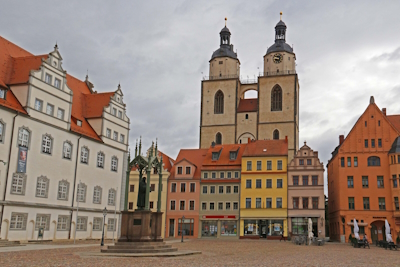
The Luther Memorials in Eisleben and Wittenberg bear testimony to the Protestant Reformation.
These two towns are closely related to the lives of Martin Luther and Philipp Melanchthon. The Memorials include sites associated with their lives as well as the castle church where, on 31 October 1517, Luther posted his famous '95 Theses', which launched the Reformation and a new era in the religious and political history of the Western world.
Community Perspective: “an odd inscription, it is more of interest for what happened here than what still exists”. And “it isn’t actually “that door” but a 19th century bronze replacement which doesn’t attempt any authenticity”. The famous Schlosskirche in Wittenberg is still an interesting place to visit, especially for the tombs of Luther and Melanchthon.
Meknes
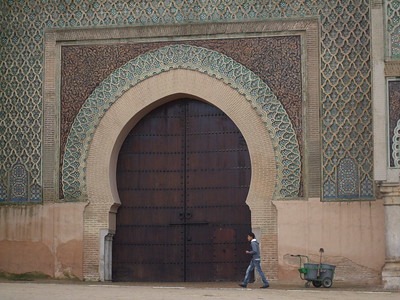
The Historic City of Meknes was the capital city of the 17th-century Alaouite dynasty.
Sultan Moulay Ismaïl redesigned the city in Hispano-Moorish style. It is enclosed by 25 km long walls that are pierced by monumental gates like the Bab Mansour. Over 80 monuments are enlisted, including mosques, madrassas, hammams and fondouks.
Community Perspective: This has less of an active, maze-like medina feel than others on Morocco’s list. The main gate “Bab el Mansour” is its architectural highlight, and the granaries and the labyrinthine Kara prison are worth a visit too.
Mount Emei, including Leshan Giant Buddha
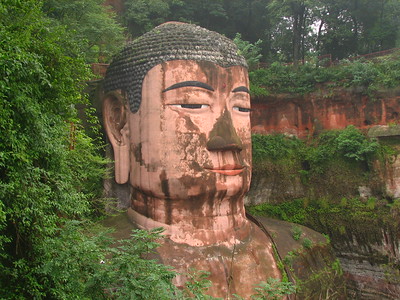
Mount Emei Scenic Area, including Leshan Giant Buddha Scenic Area, comprises the place where Buddhism was first established in China.
The slopes and summit of Mount Emei hold numerous traditional temples, including the successor to the 1st-century Buddhist temple that was the first to be built in China. The nearby 8th-century Giant Buddha of Leshan measures 71 m high overall, which makes it the largest sculpture of the Buddha in the world. Covering Emei Shan is a sub-tropical forest with many endemic and endangered plants such as orchids, rhododendrons, camellias, ginkgos, cycads and tree ferns.
Community Perspective: Els spent 3 days in the area, admired the head of the Great Buddha and hiked down the mountains. Frederik compared Emei Shan to the similar WHS of Wutaishan and liked the natural setting of the former more.
Okapi Wildlife Reserve

The Okapi Wildlife Reserve protects a rainforest that is home to about 5,000 of the estimated 30,000 okapi (forest giraffes) surviving in the wild.
The reserve lies in the Congo Basin and covers part of the Ituri rainforest. It has numerous species that are absent from surrounding areas. This includes endemic and threatened species of primates and birds, such as large numbers of chimpanzees and forest elephants.
Community Perspective: this site has been unreviewed so far.
Oporto
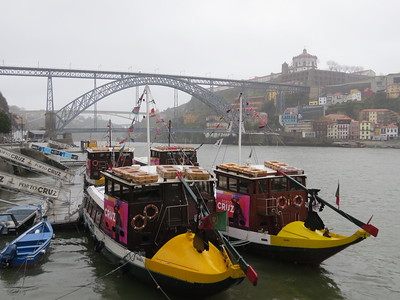
The Historic Centre of Oporto, Luiz I Bridge and Monastery of Serra do Pilar comprise a continuously evolving European city with commercial and cultural links to the sea.
The city is situated on a steep hill along the estuary of the river Douro, which extends to the coastline of the Atlantic Ocean. It has developed based on a medieval town plan, with the use of totally different building styles. Its centre within the Fernandine walls is chock-full of churches, monasteries, public buildings, a bishop's palace and the cathedral.
Community Perspective: Oporto is built on several hills, so everything is a bit of a hike here. But “it just oozes character”. Don’t miss the Igreja de São Francisco and the Palacio da Bolsa. See Hubert’s review for more tips for a longer visit.
Pannonhalma
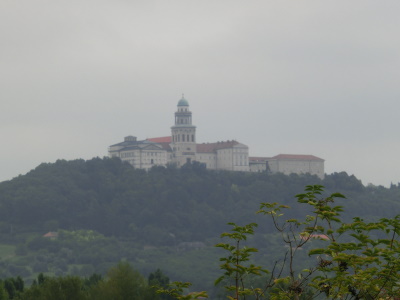
The Millenary Benedictine Abbey of Pannonhalma and its Natural Environment was the first Hungarian Christian monastery and has been influential in the spread of Christianity over Central Europe.
Built on the Sacred Hill of Pannonia, the monastery was founded in 996 when Hungary was primarily a pagan culture. It's an example of an early Christian monastery that still is in use by Benedictine monks. The complex also holds educational buildings, a forest and botanical and herbal gardens.
Community Perspective: The highlight here, in addition to the impressive natural setting, is the 19th-century classicist library. The site usually swarms with tourists. You can move around at your own pace using an audio guide.
Pienza
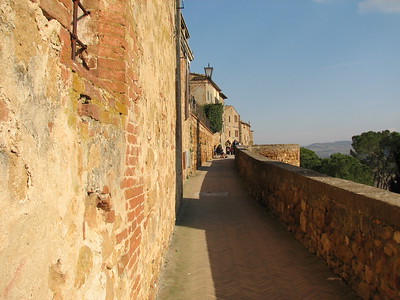
The Historic Centre of the City of Pienza is the earliest example of a Renaissance "ideal town".
It was created by Pope Pius II, a humanist who decided to refurbish his poor hometown of Corsignano and turn it into his papal summer court. The buildings and objects designed by Bernardo Rossellino are a blend of the Renaissance and the German Gothic style. Also, the technique of sgraffito was used all over town.
Community Perspective: To most of us, it’s a lovely little town with a homogenous townscape. You have to be a student of architectural history to fully appreciate the Humanist Renaissance influence in its design.
Querétaro
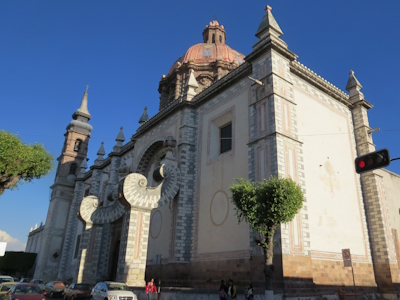
The Historic Monuments Zone of Querétaro comprises a well-preserved Spanish colonial town.
It has a specific 17th-century street plan and a number of 18th-century rich post-Baroque monuments. The layout of the town was split in two: a rectilinear street plan for the Spanish settlers, and small winding streets for the quarters of the indigenous population. The most prominent feature of the city is its enormous aqueduct.
Community Perspective: This is among the Mexican WH cities that reviewers enjoy the least. Highlights include the Santa Rosa de Viterbo church, the cloister of the Art Museum and the Aqueduct.
Ravenna
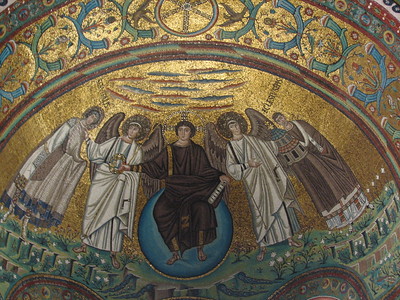
The Early Christian Monuments of Ravenna comprise a unique collection of mosaic art and monuments from the 5th and 6th centuries.
Ravenna, the capital of the Late Roman Empire and Byzantine Italy, developed into a major centre of Christian art and culture at the instigation of Galla Placidia, the wife of Western Roman Emperor Constantius III. Its religious and funerary art and architecture blends oriental and western styles and mostly stands out for its mosaics.
Community Perspective: The monuments that contain the mosaics are spread out over several locations in and around Ravenna. “It is really impossible to say which monument and mosaic is the most impressive”, so try and see as many as you can.
Salzburg
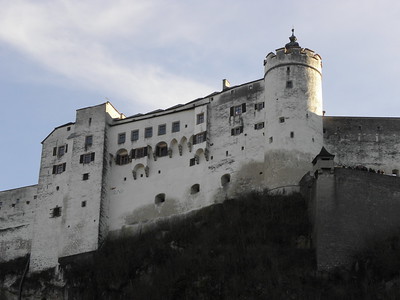
The Historic Centre of the City of Salzburg with its world-famous Baroque architecture is one of the best-preserved examples of an European ecclesiastical city-state.
Here German and Italian cultures interchanged, with Italian architects responsible for many of its Baroque monuments. The city’s quarters were divided into those belonging to the Prince-Archbishops and those of the burghers. They include notable buildings from the Middle Ages to the 20th century. Furthermore, Salzburg is historically associated with classical music and festivals.
Community Perspective: Very touristy but still lovely. The Benedictine Abbey of St. Peter with the catacombs and graveyard is often named as its highlight. See Ian’s review for drink and food tips.
Sangiran Early Man Site
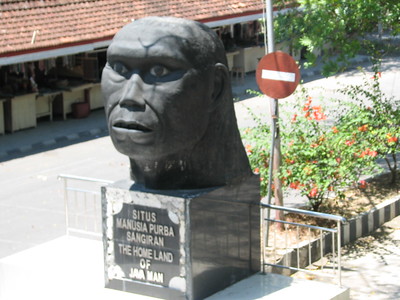
Sangiran Early Man Site is one of the key sites for the study of human evolution during the Pleistocene.
It became well-known in the 1890s after the discovery of "Java Man", which has been reclassified as part of the species Homo erectus, and associated stone artifacts. Many more ancient human (>100) and animal fossils have since been found in this large area of 56 square km.
Community Perspective: easily accessible from the town of Solo, the main focus is the museum where you can see some of the bones that were found. Be aware that it is closed on Mondays. Alexander shares his story of going to one of the dig sites.
Sceilg Mhichíl
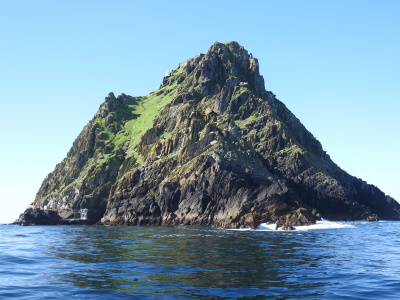
Sceilg Mhichíl (Skellig Michael) is an early Christian monastic complex deliberately constructed on a difficult-to-access, steep rocky island.
It was created in the tradition of medieval island monastic sites known for their asceticism. The island held living spaces, buildings for worship and plots for food production. The buildings were constructed using dry stone masonry and have survived mostly intact. They include the Monastery (including an oratory and St. Michael's Church) and the Hermitage.
Community Perspective: nowadays it still is hard to reach when the seas are rough, but it is a popular site to visit for the general public (and Star Wars fans). The more expensive and longer landing tours will allow you to set foot on the island. A climb from the base of the island via a dry-stone stairway then awaits you, culminating in the area with the beehive huts and the monastery. When you read the reviews chronologically, the oldest first, you will notice a fair bit of modernization, including the introduction of online booking, the closing of dangerous trails, and the first appearance of a toilet on the island!
Schönbrunn
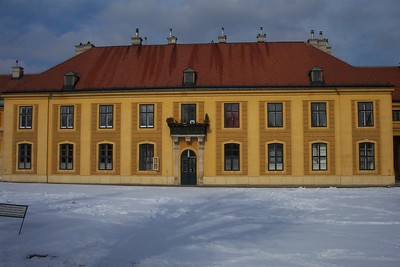
The Palace and Gardens of Schönbrunn is a Baroque Gesamtkunstwerk that symbolizes Habsburg power.
Schönbrunn was the former Habsburg summer residence. The late 17th-century construction was modified often through the centuries to serve the tastes of the successive monarchs. It got its present form under Empress Maria Theresia, who added the theatre and the garden to make her stay more enjoyable.
Community Perspective: It’s best to take your time to see the whole complex, with a focus on the gardens and the exterior of the palace. Avoid visiting in summer or December if you can, as these are the busiest times.
The trulli of Alberobello
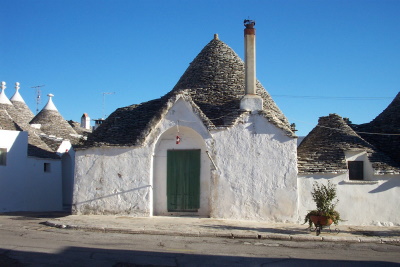
The Trulli of Alberobello are an exceptional example of a vernacular building technique that has survived from prehistoric times until today.
Trulli are dry-stone constructions that once were common in the Mediterranean region. The ones in the Monti and Aja Piccola quarters of Alberobello are characterized by their dome or conical-shaped roofs, which in some cases are painted with a pagan symbol to ward off bad luck.
Community Perspective: The Aja Piccola area is less commercialized than the Monti, and therefore generates a more authentic feeling. You can also stay overnight in a trullo, as Clyde did.
Upper Svaneti
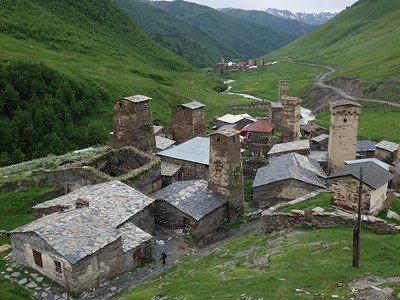
Upper Svaneti is a mountainous region known for its unique medieval defensive tower houses.
The region is inhabited by the Svan people. Their villages have retained their medieval appearance and traditional land use. They hold small Georgian Orthodox churches and various fortified buildings. The core zone is limited to the village of Chazhashi in the Ushguli community.
Community Perspective: located in a remote and dramatic landscape, the site is still only possible to reach by 4WD. Walter remembers the risk of kidnapping that deterred tourists from this region in the past. The tiny core zone raises questions, it seems to have made more sense to include all the villages and the mountains surrounding them.
Uxmal
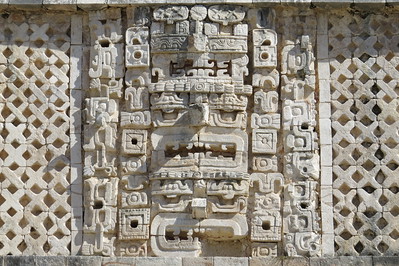
The Pre-Hispanic Town of Uxmal comprises the remains of the Late Mayan centers of Uxmal, Kabah, Labná and Sayil.
Uxmal grew into a major political and urban centre in the 10th century. It was the heart of the Puuc region. At these sites, cosmology was used to determine the urban layout and the characteristic Puuc architecture with richly decorated building facades was developed. Most show representations of the head of Chaac, the rain god.
Community Perspective: Try to visit some of the other included sites as well in addition to the main site of Uxmal, although these may come across as “a bit over-the-top with the repetitive Chaac carvings”.
Verla Groundwood and Board Mill

The Verla Groundwood and Board Mill is a well-preserved rural industrial settlement that was used for pulp, paper, and board production.
The ca. 50 buildings consist of the wood-processing mill, board-drying plant, storehouses, workers' houses and the owner's residence. The separate production area held water power plants. It has a forest setting where wood as a raw material and water as a source of energy were easily at hand. The mill was founded in 1882 and continued to operate until 1964. It produced mainly (paper)board for export to Russia, Europe and the USA.
Community Perspective: Join a tour of the interior as it explains the story of how the factory was run. Nan and Tsunami have described how to reach the site by public transport; unfortunately, the bus hours do not correspond well with the timing of the tours.
Volcanoes of Kamchatka
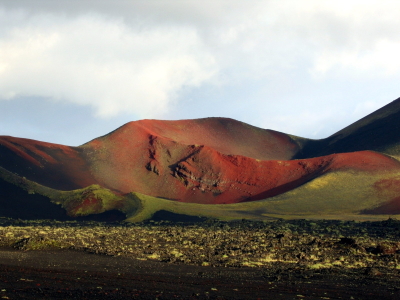
The Volcanoes of Kamchatka represent one of the most outstanding volcanic regions in the world.
The Kamchatka Peninsula was shaped by tectonic and volcanic activity. It is the globally most active volcanic region, with a display of features such geysers, mudholes, and hot springs. The coastal landscapes and seascape are also notable and are home to salmon spawning areas and major seabird colonies.
Community Perspective: This covers a large area and requires at least a week of your time. Martina visited in 2016 and enjoyed the hikes and the helicopter tour of the Valley of Geysirs. Alexander did so in 2020 and added some rafting to the activities. The helicopter tours are highly recommended to see the best places of Kamchatka and to appreciate the wilderness of this place.
W-Arly-Pendjari Complex
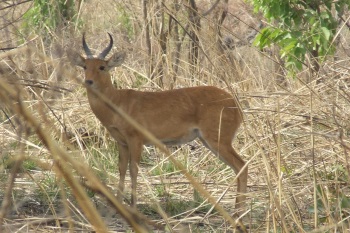
The W-Arly-Pendjari Complex comprises a savanna landscape recognized for its biodiversity of birds, fish and plants.
These three contiguous parks are located within the Volta River basin at a transition zone between savannah and woodlands, with both terrestrial and aquatic ecosystems. The area is a refuge for species that have mostly disappeared from the rest of West Africa, such as elephants, wild dogs, lion, leopard, cheetah and manatee.
Community Perspective: you won’t find wildlife in the innumerable quantities of the East African parks, but at least in visible herds. The facilities suffer from underinvestment and the border area with and in Burkina Faso is considered unsafe. Tamas made an adventurous approach to the part in Niger (Park ‘W’) as did Michael, while Solivagant and Chris focused on Pendjari in Benin.
Extended Sites in 1996
Vicenza and the Palladian Villas
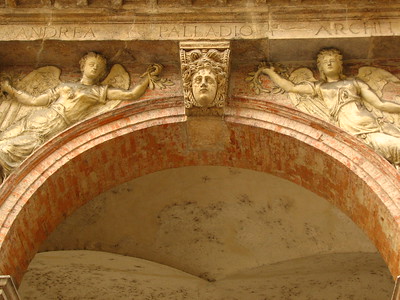
The City of Vicenza and the Palladian Villas of the Veneto represent the Palladian style in architecture, which became influential all over Europe and the United States.
The buildings are the work of the Renaissance master Andrea Palladio. His work was strongly inspired by classical Roman principles. For Vicenza, he developed town houses that fit within the texture of the medieval city, while for the rural areas, he designed more monumental country villas.
Community Perspective: A highlight in Vicenza is the Teatro Olimpico, while La Rotonda is a fine example of a country villa just outside the city borders. Most of the villas have very limited opening hours, except for the beautiful Villa Emo.
Graeme Ramshaw - 01-May-05

The town of Palladio, Vicenza, to this day bears witness to the architectural feats of its most famous resident. From the immense Basilica that dominates the Palazzo dei Signori to the perfect geometry of the villa, La Rotonda, that watches over the town from afar, Palladio's genius is everywhere on display. Of particular note are the Teatro Olimpico, which Palladio designed but died before completing, and the street, Contra Porti, along which many of his finest palazzi reside. Vicenza is a short hop from Venice and Padua, certainly worth a day if you have it in your schedule and a must for you architecture buffs.
Read On